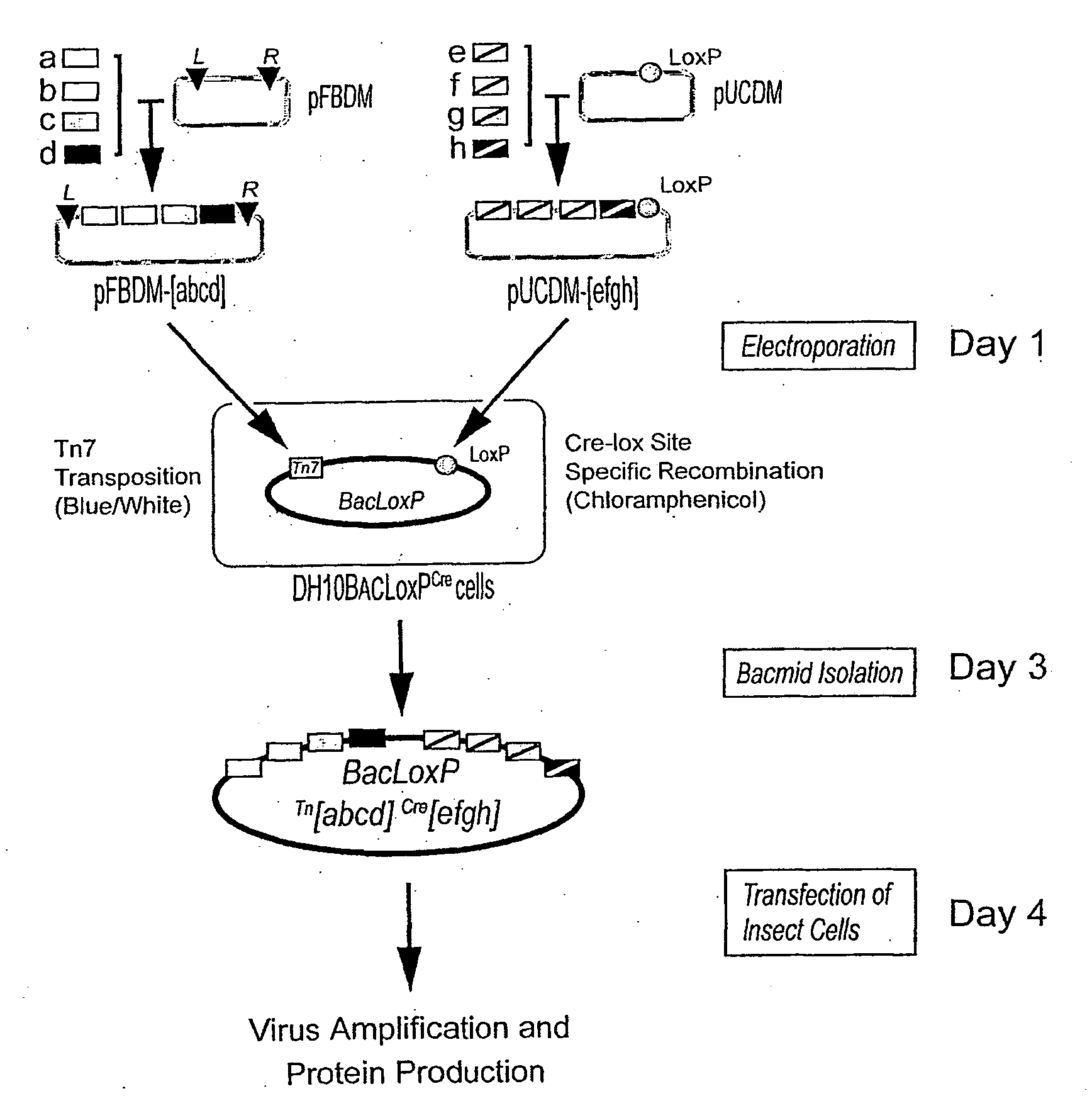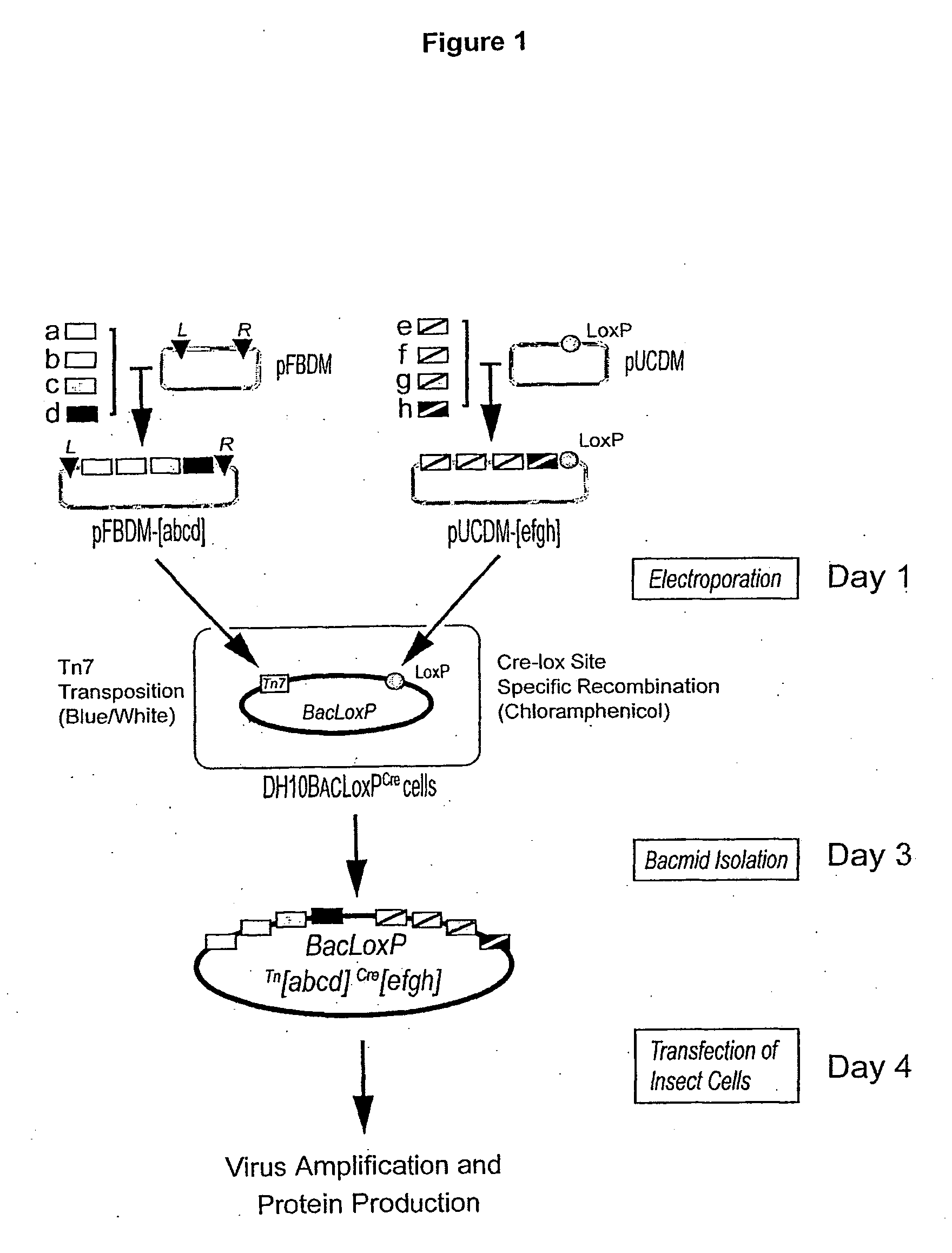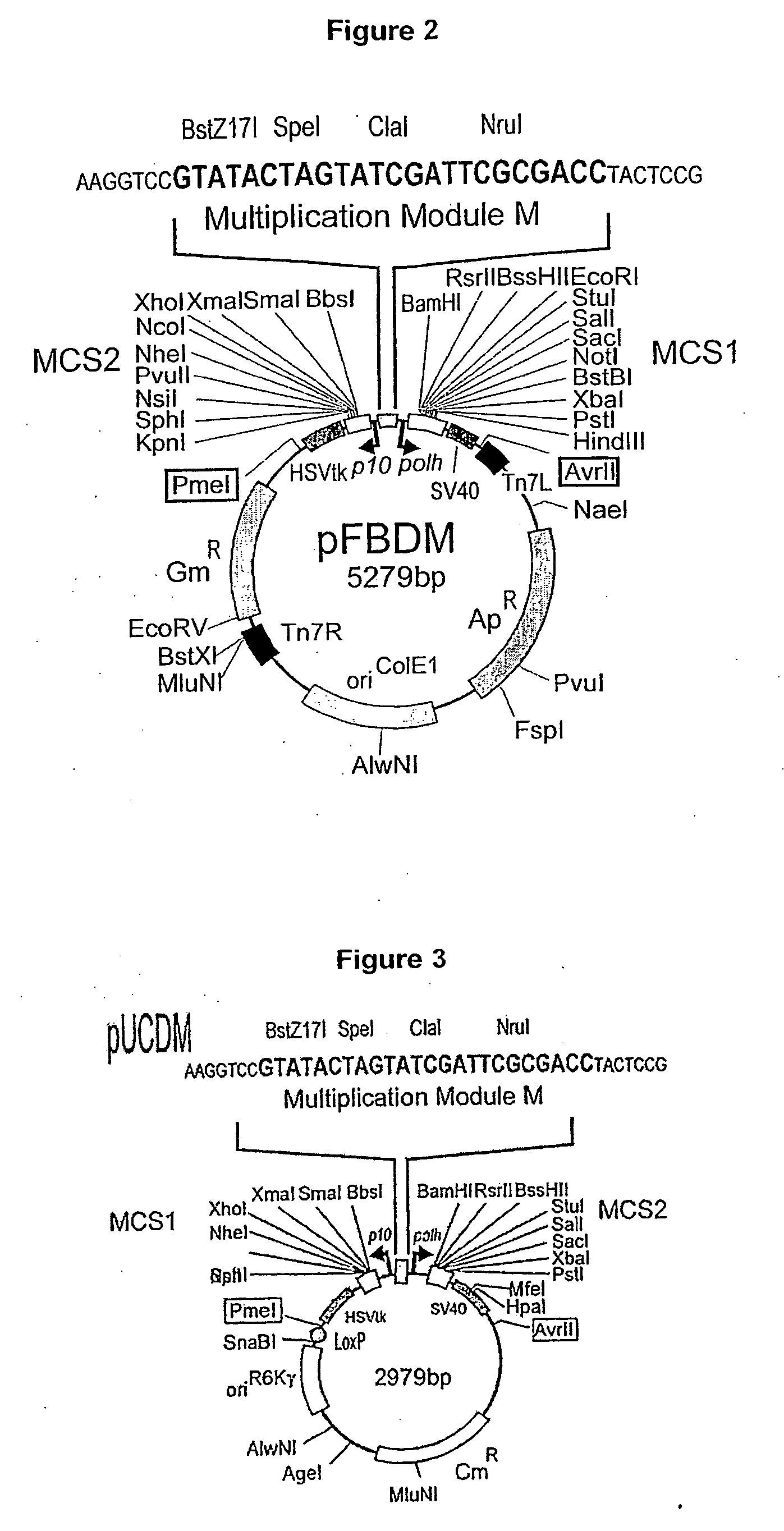New Expression Tools for Multiprotein Applications
a multiprotein and expression tool technology, applied in the field of identification of novel multiprotein complexes, can solve the problems of limiting the applicability of conventional cloning strategies, affecting the solubility and activity of biological macromolecules, and considerable variations in individual protein production levels
- Summary
- Abstract
- Description
- Claims
- Application Information
AI Technical Summary
Benefits of technology
Problems solved by technology
Method used
Image
Examples
example 1
Transfer Vectors pFBDM and pUCDM and Baculovirus Vector MultiBac
[0175] The transfer vector pFBDM (SEQ ID NO:1, FIG. 11) contains two expression cassettes in a head-to-head arrangement with multiple cloning sites MCS1 and MCS2 flanked by polh or p10 promoters and SV40 or HSVtk polyA signal sequences, respectively. Multiplication module M is located in between the promoter sequences. The sequences used for Tn7 transposition (Tn7L and Tn7R) encompass the expression cassettes and a gentamycin resistance marker. For further details, see FIG. 2.
[0176] The transfer vector pUCDM (SEQ ID NO:2, FIG. 12) has an identical expression cassette including a multiplication module as pFBDM. This expression cassette is flanked by a LoxP inverted repeat. Vector pUCDM contains a chloramphenicol resistance marker and a conditional R6Kγ origin of replication which makes its propagation dependent on the expression of the pir gene in the prokaryotic host. For further details, see FIG. 3.
[0177] In short, ...
example 2
Generating Multigene Expression Cassettes
[0183] The vectors pFBDM and pUCDM are particularly suited for generating multigene expression cassettes due to the multiplication module inserted in between the two promoters. The logic of multiplication is illustrated in FIG. 4. The only prerequisite for assembling multigene expression cassettes is that the restriction enzymes used for multiplication (e.g. PmeI, AvrII, SpeI, and either BstZ17I or NruI) are unique, which can be easily accomplished for instance by site directed mutagenesis prior to multigene cassette assembly or provision of compounds (e.g. peptide nucleic acids) capable of masking additional sites that are not to be cleaved in the inserted encoding DNA sequences. Genes are cloned into MCS1 and MCS2 of pFBDM. The entire expression cassette is then excised by PmeI and AvrII digestion. The resulting fragment is placed into the multiplication module of a pFBDM derivative containing further sets of genes via either SpeI / BstZ17I ...
example 3
Baculovirus Engineered for Improved Protein Production
[0184] The baculovirus genome was modified to obtain improved protein production properties. Two baculoviral genes, v-cath and chiA, were disrupted which leads to improved maintenance of cellular compartments during infection and protein production. The v-cath gene encodes for a viral protease, V-CATH, which is activated upon cell death by a process dependent on a juxtaposed gene on the viral DNA, chiA, which encodes for a chitinase. Both genes were disrupted to eliminate V-CATH activity and to gain the option of utilizing chitin-affinity chromatography for purification without interference from the chiA gene product. The quality of proteins produced by this so-called MultiBac baculovirus is significantly improved through a reduction of viral-dependent proteolytic activity and reduced cell lysis. In place of the disrupted viral DNA sequence, a LoxP sequence for cre-lox site-specific recombination was placed. For further details ...
PUM
 Login to View More
Login to View More Abstract
Description
Claims
Application Information
 Login to View More
Login to View More - R&D
- Intellectual Property
- Life Sciences
- Materials
- Tech Scout
- Unparalleled Data Quality
- Higher Quality Content
- 60% Fewer Hallucinations
Browse by: Latest US Patents, China's latest patents, Technical Efficacy Thesaurus, Application Domain, Technology Topic, Popular Technical Reports.
© 2025 PatSnap. All rights reserved.Legal|Privacy policy|Modern Slavery Act Transparency Statement|Sitemap|About US| Contact US: help@patsnap.com



